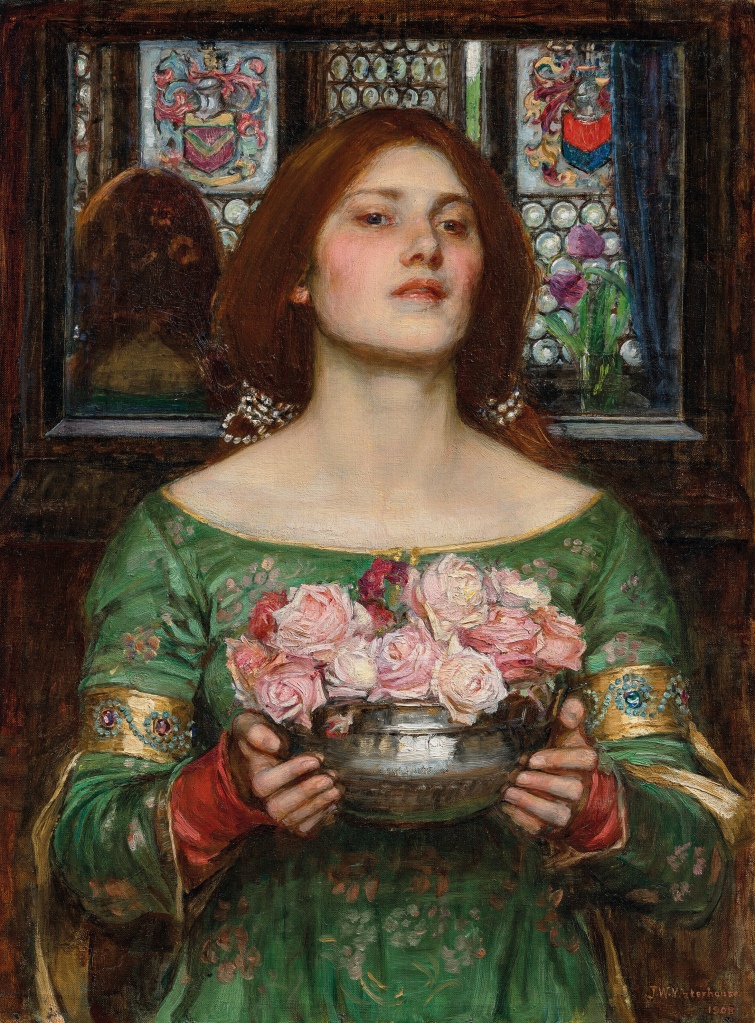
oil on canvas, 61.6 x 45.7 cm.
With this painting, Waterhouse started a six-year exploration of what we might call flower-women, a series of gorgeous, non-narrative paintings. In them, maidens carry flowers in vases, arrange them in their hair as they gaze into mirrors, or inhale their scent in gardens. Gather Ye Rosebuds while Ye May was among the earliest, taking its title from the (then) well-known poem by Robert Herrick (1591-1674), To the Virgins, to Make Much of Time:
‘Gather ye rosebuds while ye may,
Old Time is still a-flying;
And this same flower that smiles today
Tomorrow will be dying.’
The inference of beauty’s inevitable disappearance is shot throughout the series.
The present painting is a masterwork of glinting historicism, featuring an array of Waterhouse’s favourite motifs. Most notable are the red lips and rosy cheeks of the proud Rossettian model, who raises her chin just-so as she — wearing a characteristically luxurious gown — presents us with flowers freshly arranged in an iconic Waterhouse prop — an expertly painted metal bowl. The brilliant reflections are sustained in the girl’s bejewelled armbands, the pearl strands that bind her braids, and the bottle-glass windows beyond. Thus, within the same year, Waterhouse produced two completely different scenes bearing the same title — Gather Ye Rosebuds While Ye May.
Because he left behind no diaries and little correspondence, we may never know what Waterhouse really thought of the present picture, but we are sure it was purchased from the RA Summer Exhibition by the barrister Sir Frederick M. Fry. Ultimately, he came to own six paintings by Waterhouse (including the 1909 Lamia) and several of his drawings; he also owned works by other contemporary masters like Abbey, George Clausen, and Seymour Lucas. The two men were close enough that Fry attended Waterhouse’s funeral in 1917, and Gather Ye Rosebuds While Ye May remained in the Frys’ possession until his estate was dispersed at Christie’s in 1943. By then, Waterhouse and his peers were so far out of fashion that this painting was offered without its original title, called merely A lady, in green dress, holding a bowl of roses. It brought only 18 guineas, a reminder of how little such a painting mattered only 35 years after its creation, especially in the depths of a terrible war.
